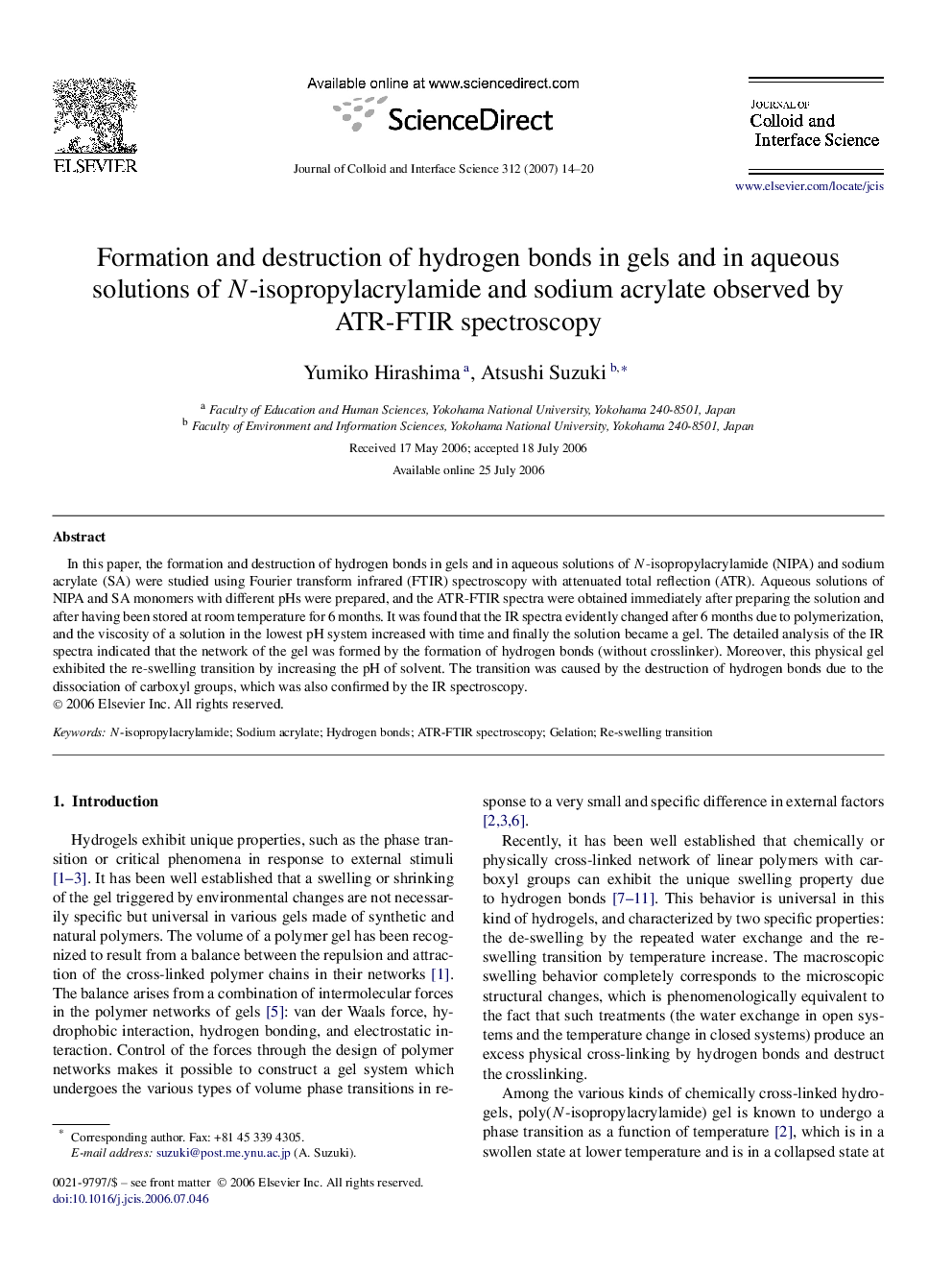| Article ID | Journal | Published Year | Pages | File Type |
|---|---|---|---|---|
| 612683 | Journal of Colloid and Interface Science | 2007 | 7 Pages |
In this paper, the formation and destruction of hydrogen bonds in gels and in aqueous solutions of N-isopropylacrylamide (NIPA) and sodium acrylate (SA) were studied using Fourier transform infrared (FTIR) spectroscopy with attenuated total reflection (ATR). Aqueous solutions of NIPA and SA monomers with different pHs were prepared, and the ATR-FTIR spectra were obtained immediately after preparing the solution and after having been stored at room temperature for 6 months. It was found that the IR spectra evidently changed after 6 months due to polymerization, and the viscosity of a solution in the lowest pH system increased with time and finally the solution became a gel. The detailed analysis of the IR spectra indicated that the network of the gel was formed by the formation of hydrogen bonds (without crosslinker). Moreover, this physical gel exhibited the re-swelling transition by increasing the pH of solvent. The transition was caused by the destruction of hydrogen bonds due to the dissociation of carboxyl groups, which was also confirmed by the IR spectroscopy.
Graphical abstractThe 3D network was formed by the formation of hydrogen bonds (without crosslinker) and the re-swelling transition by their destructions were observed in aqueous solutions of N-isopropylacrylamide and sodium acrylate.Figure optionsDownload full-size imageDownload as PowerPoint slide
